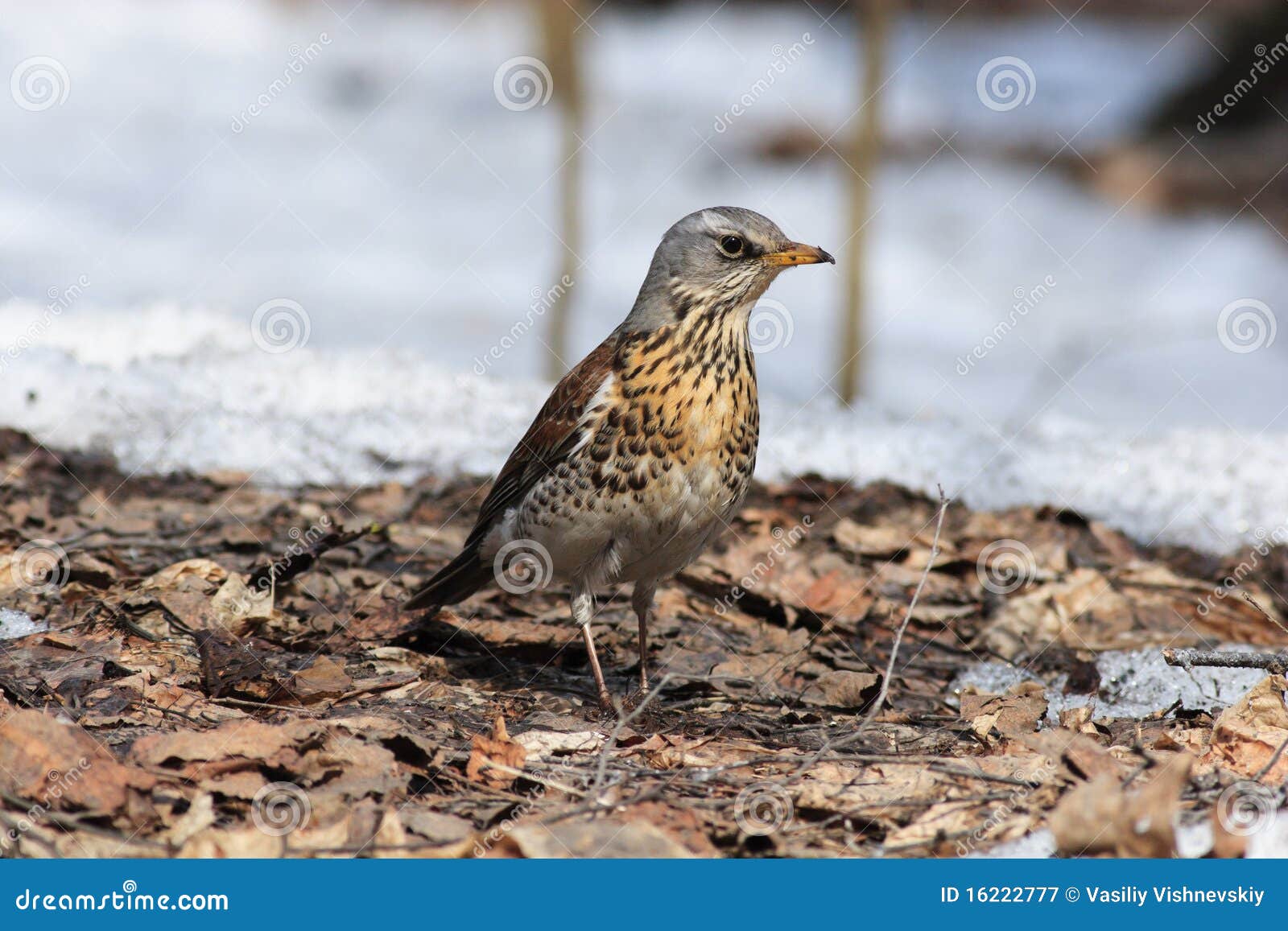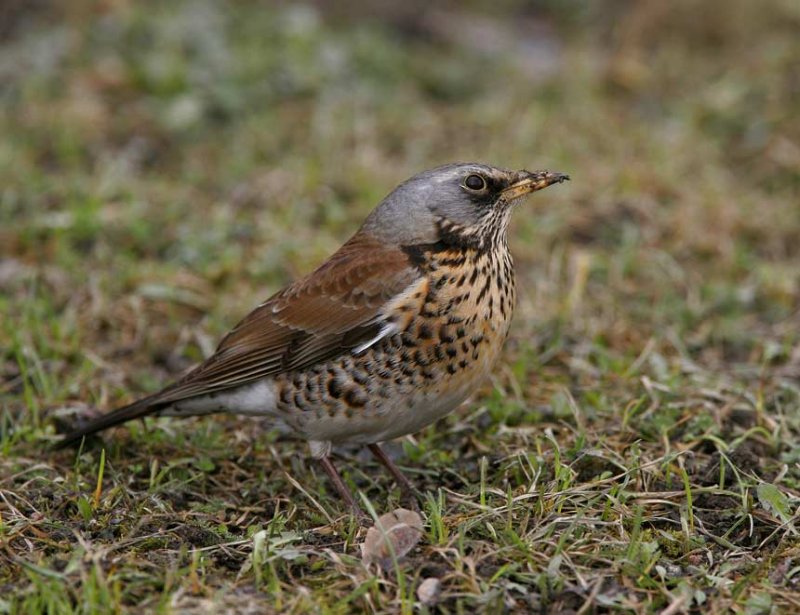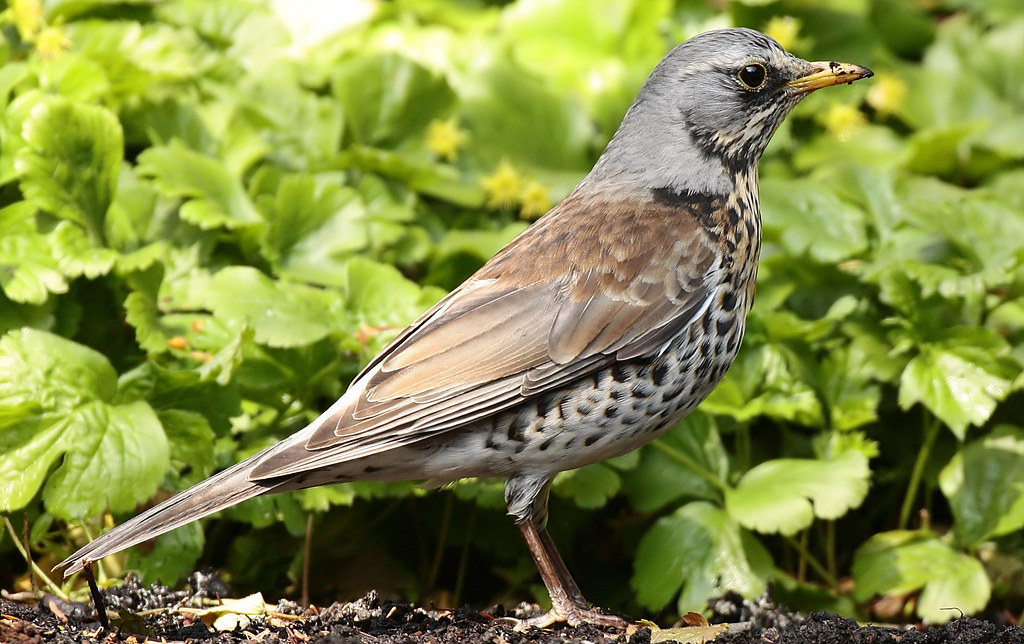Fieldfare, Turdus pilaris stock image. Image of habitat 16222777

Fieldfare, Turdus pilaris stock photo. Image of british 32931904
Winter The Fieldfare is a member of the thrush family. It has a similar appearance and behavior to the American Robin. This medium-size European bird is sometimes seen in North America and is recognized as a vagrant bird. These are hardy birds that nest in the central and northern regions of Europe. Return to Thrushes Return to Orange Birds

Fieldfare, Turdus pilaris stock image. Image of british 32931915
The fieldfare (Turdus pilaris) is a member of the thrush family Turdidae. It breeds in woodland and scrub in northern Europe and across the Palearctic. It is strongly migratory, with many northern birds moving south during the winter. It is a very rare breeder in the British Isles, but winters in large numbers in the United Kingdom, Southern.

Fieldfare Turdus pilaris Focusing on Wildlife
Fieldfare Bird Facts | Turdus Pilaris Home Birds and wildlife Fieldfare Birds and wildlife Fieldfare Turdus pilaris Group: Thrushes UK Conservation status: Red Fieldfare Fieldfare 1 / 3 How to identify Fieldfares are large, colourful thrushes, much like a Mistle Thrush in size, shape and behaviour.

Fieldfare, Turdus pilaris stock image. Image of habitat 16222777
Population justification: In Europe, the breeding population is estimated to number 14,200,000-28,600,000 pairs, which equates to 28,400,000-57,300,000 mature individuals (BirdLife International 2015).Europe forms c.40% of the global range, so a very preliminary estimate of the global population size is 71,000,000-143,000,000 mature individuals, although further validation of this estimate is.

Fieldfare (Turdus pilaris)JS Lorn Natural History group
Turdus pilaris (Fieldfare) - Avibase Welcome Guest Fieldfare Turdus pilaris Linnaeus, C 1758 summary taxon grid synonyms map life history eBird Wikipedia NatureServe ITIS Flickr Audio More links The fieldfare is a member of the thrush family Turdidae. It breeds in woodland and scrub in northern Europe and across the Palearctic.

Fieldfare (Turdus pilaris) stock image. Image of look 50036905
Fieldfare Turdus pilaris Summary Text account Data table and detailed info Distribution map Reference and further resources Family: Turdidae (Thrushes) Authority: Linnaeus, 1758 Red List Category Data CC-By-SA by OpenStreetMap Click here for more information about the Red List categories and criteria Justification of Red List category

Fieldfare (Turdus pilaris) stock image. Image of natural 23166827
The fieldfare (Turdus pilaris) is a member of the thrush family Turdidae. It breeds in woodland and scrub in northern Europe and across the Palearctic. It is strongly migratory, with many northern birds moving south during the winter.

Fieldfare (Turdus pilaris) photo Hans Bister photos at
Fieldfare Turdus pilaris LC Least Concern Names (45) Monotypic Nigel Collar Version: 1.0 — Published March 4, 2020 Text last updated January 13, 2013 Sign in to see your badges Account Field Identification Systematics History Subspecies Distribution Habitat Movement Diet and Foraging Sounds and Vocal Behavior Breeding Conservation Status

Fieldfare Fieldfare (Turdus pilaris) standing between flow… Flickr
IUCN Red List. published: 26-07-2004 - Updated: 22-04-2023. 2024 Oiseaux.net. Identification record : Fieldfare (Turdus pilaris) is a bird which belongs to the family of Turdidés and the order of Passeriformes.

Fieldfare Turdus pilaris GardenBird
Rather large, subtly attractive thrush with blue-gray head, dark chestnut-brown back, gray rump, and variable peachy-buff wash on spotted breast. Breeds in forested habitats, often favoring wooded areas adjacent to more open foraging grounds; in winter, found mainly in open woodland, farmland with hedges, orchards, and parkland. Often breeds colonially and sometimes retains social habits on.
-15.jpg)
Fieldfare (Turdus pilaris)
Fieldfare Fieldfare Turdus pilaris With its striking, richly coloured plumage, the Fieldfare is an impressive and large member of the thrush family. The head is grey, as is the rump, which contrasts with the black tail and the rich chestnut-red back and wings, the latter with much black in the longer flight feathers..

Fieldfare (Turdus pilaris) Wild birds, Beautiful birds, Pet birds
Fieldfare Key facts Scientific name: Turdus pilaris Status: Winter visitor, rare breeder Breeding birds: 1 - 2 pairs Wintering birds: 720,000 Conservation status: Red Family: Thrushes Length: 25 cm Wingspan: 39 - 42 cm Weight: 80 - 120 g Typical lifespan: 2 years What do fieldfares look like?

Turdus Pilaris Fieldfare Thrush Free photo on Pixabay Pixabay
Turdus pilaris (Linnaeus, 1758) FF FIELD 11980 Family: Passeriformes > Turdidae The grey-headed, chestnut-backed Fieldfare is the largest of the thrushes, and visits Britain & Ireland during the winter months. Fieldfares begin arriving on the UK's eastern coasts from Fennoscandia, western Russia and eastern Europe during early October.

Fieldfare, Turdus pilaris stock image. Image of wildlife 16222797
吴语 Turdus pilaris) is a member of the . It breeds in woodland and scrub in northern . It is strongly , with many northern birds moving south during the winter. It is a very rare breeder in Great Britain Ireland, but winters in large numbers in the United Kingdom, Southern Europe, North Africa and the Middle East.

Fieldfare, (Turdus Pilaris) Stock Photo Image of bird, nature 38883684
Ecology This species typically inhabits mixed habitat, mainly part-wooded and part-open country, commonly using trees for breeding and roosting and hedges and open ground for foraging. It breeds in boreal forests of mixed pine ( Pinus) and birch ( Betul a), as well as scrub, clearings, parks and gardens.

Turdus pilaris The fieldfare (Turdus pilaris) is a member … Flickr
Fieldfares are a monotypic species (meaning there are no subspecies) identified as 'Turdus pilaris' from the family 'Turdidae', which includes chats and thrushes. They belong to the order known as 'Passeriformes' which is the largest order of birds by far containing over 6,500 species.